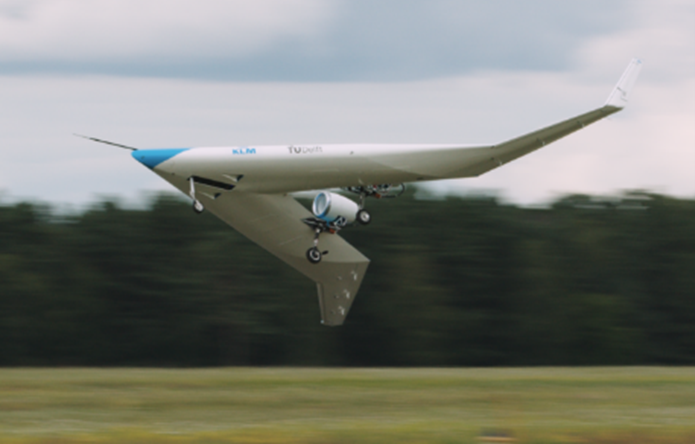Flying V Flight Control
Team

Dr.ir. R. (Roelof) Vos
PI
✉ R.Vos@tudelft.nl
Dr.ir. E. (Erik-Jan) van Kampen
Co-PI
✉ E.vanKampen@tudelft.nl

X. (Sherry) Wang
Co-PI
✉ X.Wang-6@tudelft.nl

ir. M.T.H. (Malcom) Brown
✉ M.T.H.Brown@tudelft.nl
Ir. O. Stroosma
✉ O.Stroosma@tudelft.nl
S. (Salvatore) Asaro
✉ S.Asaro@tudelft.nl

Ir. Burhan Saify
B. (Burhan) Saify
✉ B.Saify@tudelft.nl
D. (Direnc) Atmaca
✉ D.Atmaca@tudelft.nl
Objective
As aviation is an important contributor to anthropogenic climate-change, future airplanes need disruptive technologies that dramatically reduce their energy consumption. The Flying V is a prime example of such a disruptive technology. It is a revolutionary new airplane configuration, which has neither a tail nor a fuselage and which holds compartments for passengers, freight and fuel inside its wing. This configuration results in a 20% improvement in energy efficiency compared to a traditional tube-and-wing aircraft. The unique design of the Flying V leads to a number of challenges in the flight control system design. The tailless configuration reduces lateral-directional stability, which can lead to undesirable flying and handling qualities. Furthermore, the control surface layout is different than in conventional aircraft, which makes the control allocation more challenging.
The aim of this project is to advance the Flying V flight control system from TRL 3 to TRL 5, which requires that the technology will be validated in relevant environment. System identification techniques are employed to derive the flight-dynamics model of a 4.6% dynamically-scaled, remotely piloted Flying-V airplane, which has been built at TU Delft. Combined with results from wind tunnel experiments, numerical simulations, inertia predictions, and scaling rules, the full-scale flight-dynamics model is derived. Using this model, the flight control laws are designed and evaluated by airline pilots using the six-degree-of-freedom research simulator of TU Delft.


